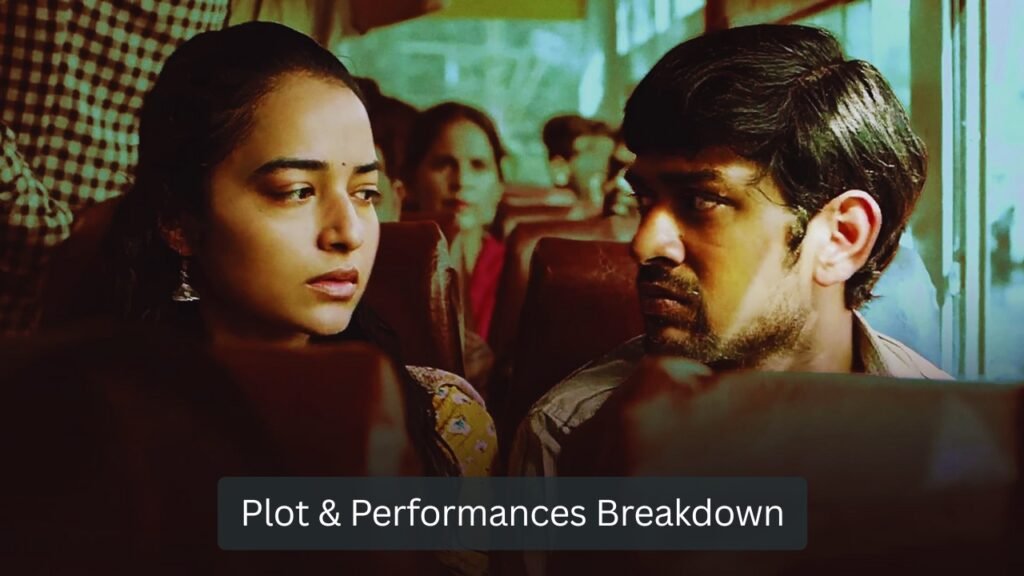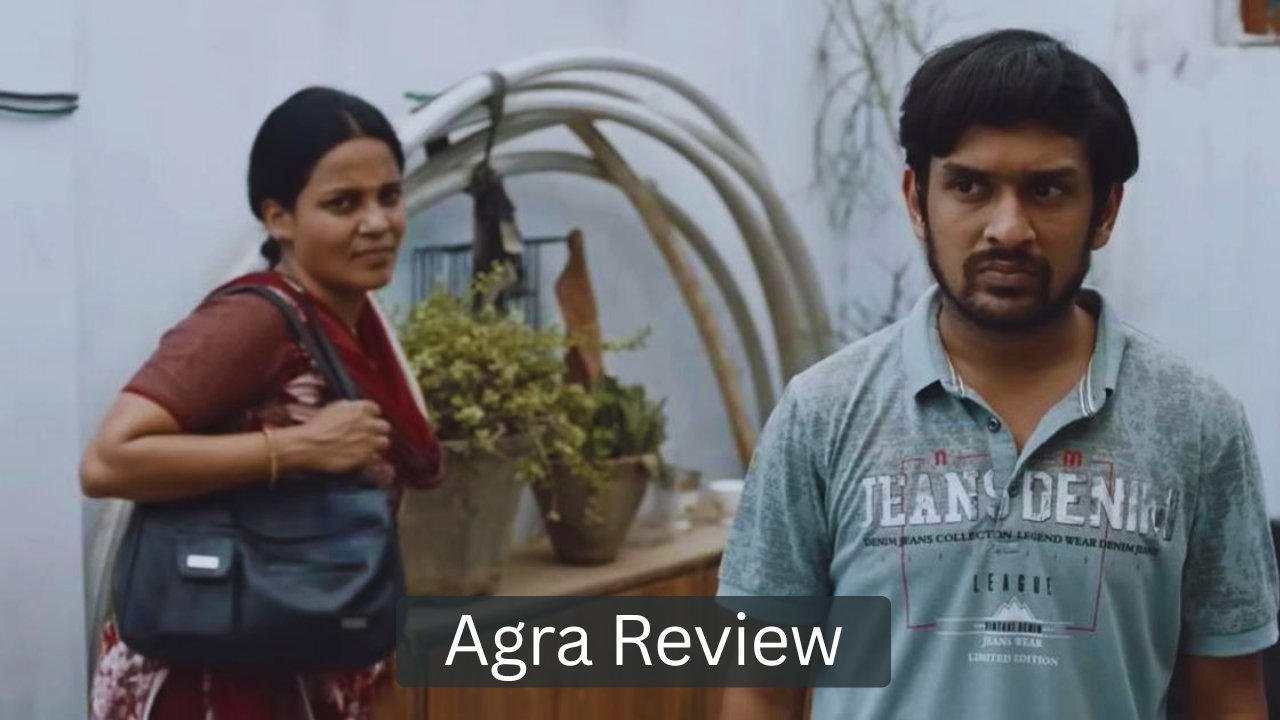Indian cinema has given audiences countless stories built on love, dreams, and broken realities, but Agra brings something far more complex, uncomfortable, and deeply human. Instead of glittering romance or a predictable coming-of-age tale, it delivers a raw, psychological story of longing, sexuality, loneliness, and the unfiltered truth of small-town India. In this Agra Review, we break down the plot, storytelling, characters, performances, and the emotional weight the Agra Review carries, while looking at how it stands apart from typical Bollywood narratives.
The Unconventional World of Agra
Agra is not a Agra Review that tries to please everyone. It does not soften its edges, hide its discomfort, or aim to be commercial. Instead, it chooses to be real, grounded, and painfully intimate, portraying the life of a young man suffocating under loneliness, societal expectations, and emotional vulnerability.
Set in the heart of Agra city, the Agra Review uses its location not just as a backdrop, but as a mirror of the central character’s mental state cramped, pressuring, narrow, and yet filled with dreams. The everyday chaos and claustrophobic spaces become visual symbols of the protagonist’s internal struggle.
Plot Breakdown – A Story Rooted in Longing & Isolation
At the center of the story is Guru, a young man living in a crowded joint family home. The house, filled with separate floors and rooms but no real emotional connection, becomes a metaphor for his life. Everyone lives together physically, yet no one truly sees or understands each other.
Guru is at a phase of life where his emotional and sexual desires are peaking, but he lives in a society where discussion about sexuality is still drenched in taboo. This silence becomes his biggest enemy. His suppressed needs, lack of emotional support, and cultural restraint push him into a suffocating psychological space.
As the story progresses, we witness:
His growing desperation for intimacy
Attempts to seek affection in the real and digital world
Internal battles between fantasies and harsh reality
Fragmentation of his identity and mental stability
The storytelling is slow, subtle, and intimate. Agra is not a movie of big events – it is a movie of small emotional earthquakes, each pushing Guru further into a corner where reality and illusion begin to blur.
A Bold Social Commentary
One strength of the Agra Review is its refusal to play safe. Agra talks openly about:
Male loneliness
Sexual frustration
Generational pressures
The hypocrisy of traditional Indian society
Mental health struggles ignored by families
These topics are rarely handled with honesty in Indian cinema. Instead of dressing up the issues with comedy or melodrama, the Agra Review shows them as they exist raw, uncomfortable, and deeply personal.
The movie also highlights how many young men, especially in smaller towns, live lives that are dictated by social control rather than emotional development. Guru is not “broken at birth” his surroundings break him slowly. The absence of communication, lack of emotional freedom, and societal silence turn him into someone even he can no longer recognize.
Characters – Imperfect People in an Imperfect World
Guru – The Heart of the Agra Review
The entire Agra Review rests on Guru’s emotional collapse. He is:
Sensitive but suppressed
Desperate but restrained
Intelligent but confused
Human but not allowed to feel human
Instead of painting him as a hero or villain, the Agra Review shows him as a product of pressure and isolation. His mental journey becomes the core emotional driver of the narrative.
The Family
His family members are not bad people; they are regular Indian middle-class individuals trapped in their own routines and assumptions. They represent a generation where talking about sexuality, fear, or personal struggles is simply not “done.” Their silence becomes another brick in the wall surrounding Guru’s shrinking world.
Women in the Agra Review
Female characters are treated with great thought and realism. They are not objects of desire or romantic prizes – they are individuals with their own stories, boundaries, and emotional depth. Their interactions with Guru reveal the contrast between his internal fantasies and real-world limitations.

Performances – The Soul of the Agra Review
If the writing gives the Agra Review its backbone, the performances give it its heartbeat. Every actor delivers with naturalism and honesty, but the standout is undeniably the lead actor playing Guru.
Guru’s Portrayal
The role demanded:
Emotional vulnerability
Internal pain without dramatic outbursts
Psychological breakdown shown subtly
Deep physical and mental transformation
He performs all of this with a level of maturity rarely seen in first-time or lesser-known actors. His eyes carry the entire weight of the Agra Review the frustration, the helplessness, the unmet desires, and the fading sense of self.
Supporting Cast
From parents to relatives to women who cross paths with the protagonist, every actor fits the world of the Agra Review . Instead of “performing,” they simply exist on screen, which makes the Agra Review even more real.
Direction – A Brave and Artistic Vision
Agra is directed with a fearless artistic approach. The Agra Review maker chooses:
Real spaces instead of stylized studio setups
Silence instead of over-explained drama
Small visual details instead of heavy dialogues
A patient pace instead of forced storytelling speed
The direction allows the audience to sit with the loneliness, instead of rushing to the next scene. This slower rhythm mirrors the suffocation of the protagonist and forces viewers to face the discomfort.
The director also uses symbolism throughout the Agra Review:
Closed rooms
Broken privacy
Digital escape attempts
Emotional walls
Confined corridors
Each frame adds depth to Guru’s inner world.
Cinematography & Sound – Enhancing the Psychological Journey
The cinematography does not rely on gloss or glamour. Instead, it uses:
Narrow frames
Low-light visuals
Tight interior shots
Mundane real-world locations
This visual style makes the audience feel as trapped as Guru. The camera becomes a silent observer rather than a guide, refusing to manipulate emotions.
The sound design is equally subtle. Instead of heavy background music, everyday household noises fans, distant traffic, doors opening and closing become the soundtrack of Guru’s collapsing mental state. This realism makes Agra feel hauntingly immersive.
Themes That Stay With You
Agra does not simply tell a story it raises questions that stay long after the Agra Review ends:
What happens when a society teaches silence instead of communication?
How many young people suffer alone simply because they can’t speak freely?
Why is male loneliness so invisible and unspoken?
How much damage is caused when emotions are treated like secrets?
The Agra Review also emphasizes that not all psychological struggles are dramatic. Sometimes, they are quiet, gradual, and unnoticed until it’s too late.
Ending – An Unsettling But Honest Closure
Without detailing spoilers, the ending does not offer a magical solution or dramatic rescue. Instead, it stays consistent with the Agra Review realistic tone. Guru’s journey comes to a close in a way that is:
Poignant
Disturbing
Thought-provoking
Emotionally honest
It forces viewers to reflect on their own environment, families, and the human need for connection.
Conclusion – A Must-Watch for Serious Cinema Lovers
This Agra Review makes one thing clear the Agra Review isn’t for those looking for entertainment alone. It is for viewers who appreciate:
Real human stories
Honest social commentary
Artistic Agra Review making
Deep character studies
Agra is bold because it shows the truth, not the ideal. It portrays a side of Indian society that exists behind closed doors, in unspoken words, and in the silence that damages young minds every day.
It is uncomfortable, meaningful, and emotionally impactful a movie that reflects reality instead of escaping from it.
For serious cinema lovers, Agra is not just a Agra Review it is a conversation India needs, and has ignored for too long.




